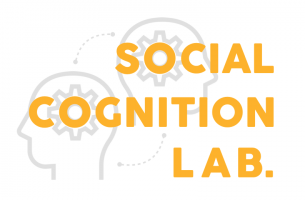Information processing can be characterized not only by its content (what we think about) but also by its dynamics (how easy, fast, coherent it is). I explore the implications of the processing dynamics for affect and cognition.
Affective Consequences. I am exploring the idea that one source of affective reactions to objects is fluency (ease or difficulty) of perceptual and conceptual processing. This is because fluency reflects the organism’s cognitive resources and provides feedback about important qualities of incoming stimuli, such as familiarity. Consistent with these ideas, our studies show that facilitation of processing elicits positive affective reactions, as reflected in preference judgments and physiological markers (Reber, Winkielman, & Schwarz, 1998; Winkielman & Cacioppo, 2001; Winkielman, Halberstadt, Fazendeiro, & Catty, 2006). To account for such findings, my colleagues and I have proposed the hedonic fluency hypothesis (Winkielman, Schwarz, Fazendeiro, & Reber, 2003; Winkielman, Schwarz, & Nowak, 2002). This hypothesis integrates a variety of apparently unrelated preference phenomena under a common theoretical framework. Such phenomena include: (i) the mere-exposure effect (repetition increases liking for objects), (ii) beauty-in-averages effect (prototypical objects are liked more than unusual ones), (iii) preferences for objects presented with higher clarity or higher figure-ground contrast, (iv) preference for objects presented at longer durations, and (v) preference for objects when mental processing of their attributes has been facilitated with perceptual or semantic primes. My colleagues and I have also applied these ideas to understanding of aesthetic experience (Reber, Schwarz, & Winkielman, 2004). Some of this work was supported by a grant from the National Science Foundation (see award abstract).
Recently, we have become interested in how affective and cognitive context changes the operation of fluency and its impact on judgment. Specifically, we found that the hedonic value of fluency depends on baseline affect, such that familiarity is “warmer” in a negative mood (DeVries,Holland, Chenier, Starr, & Winkielman, 2010). Our work also shows that the same stimulus may be fluent or disfluent, and consequently liked or disliked, depending on the cognitive task performed on the stimulus. For example, “average” (blended, morphed) faces are more positive (e.g., more attractive and trustworthy) when the current task makes them easy to categorize, but less positive when they represent two highly practiced categories (Halberstadt, Pecher, Zeelenberg, Wai, & Winkielman, 2013) or when categorization requirements makes them disfluent (Halberstadt & Winkielman, 2014; Winkielman, Olszanowski, & Gola, 2015).
Inferential Consequences. I investigate the judgmental role of “cognitive experiences”, such as recall difficulty, feeling of familiarity, or sense of coherence. For example, our studies show that the subjective retrieval experience or how you recall can override the implication of objectively available information or what you recall. This process can lead to paradoxical effects, such as people judging their memory as worse when they recall more events (Winkielman, Schwarz, & Belli, 1998). Further, we show that the impact of an experience, such as recall difficulty, on judgments is mediated by people’s beliefs about the source and meaning of the experience (Winkielman & Schwarz, 2001). Interestingly, even though recall difficulty is objectively hard (requires physiological mobilization), it enters judgment only to the extent it changes the subjective sense of difficulty (von Helversen, Gendolla, Winkielman, & Schmidt, 2008). I am also very interested in the origins and the use of the familiarity in recognition memory. We show that familiarity can be driven by driven up and down by perceptual fluency and disfluency (Huber, Clark, Huber, & Winkielman, 2008) and that familiarity that derives from conceptual relatedness can lead memory astray, but only if the subjective experience is misattributed (Fazendeiro, Winkielman, Luo, & Lorah, 2005). Finally, my colleagues and I explore the idea that feelings related to coherence (a sense of integrality or fit) can be non-specific and free-floating, leading to cross-modal influences on a variety of judgments, including regularity and familarity (Ziembowicz, Nowak, & Winkielman, 2013; Winkielman, Ziembowicz & Nowak, 2015).
